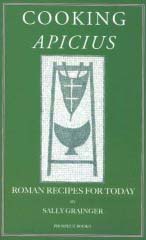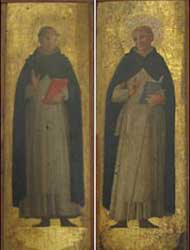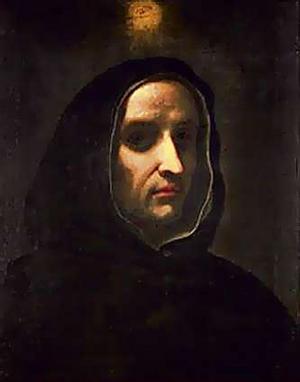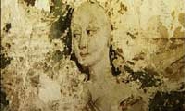Posts from — November 2006
Joan of Arc at the Corcoran Gallery of Art in Washington, DC
 From November 18, 2006 through January 21, 2007, the Corcoran Gallery of Art in Washington, D.C. is presenting an exhibition on Joan of Arc (ce 1412-1431). There aren’t many historical figures with a more interesting resume than Joan of Arc. What’s more fun than a cross-dressing religious fanatic warrior who is burned at the stake and later made a saint. It’s good stuff and it has been an artistic inspiration for many over the centuries. From the gallery web site:
From November 18, 2006 through January 21, 2007, the Corcoran Gallery of Art in Washington, D.C. is presenting an exhibition on Joan of Arc (ce 1412-1431). There aren’t many historical figures with a more interesting resume than Joan of Arc. What’s more fun than a cross-dressing religious fanatic warrior who is burned at the stake and later made a saint. It’s good stuff and it has been an artistic inspiration for many over the centuries. From the gallery web site:
The exhibition surveys more than 200 French and American works produced over five centuries, including paintings, sculpture, illustrated books and manuscripts, textiles and popular art on loan from major institutions, including the Metropolitan Museum of Art, the National Gallery of Art, the John and Mable Ringling Museum, the Library of Congress, Harvard University, the Boston Public Library and Columbia University. These varied loans contextualize Boutet de Monvel’s Joan of Arc works in the Corcoran’s collection.
This represents a unique opportunity in the Washington, D.C. area to see illuminated manuscripts from a variety of institutions. In addition, it’s interesting to see the form that the Joan of Arc story has taken over the centuries.
[tags]illuminated manuscript, Corcoran Gallery of Art, Joan of Arc, medieval history, 15th century[/tags]
November 24, 2006 Comments Off on Joan of Arc at the Corcoran Gallery of Art in Washington, DC
A Manuscript from the Dark Ages – The Apicius Cookbook
 If you watched CBS Sunday Morning today you saw a segment entitled “The Art of the Cookbook” that featured “The Apicus”. There are two known copies of “The Apicius”. The Vatican holds the oldest copy. The manuscipt shown on CBS is from the 9th century and is owned the The New York Academy of Medicine. The original book was is credited to Marcus Gavius Apiciusin who was a notorius Roman foodie from the first century. Most historians, however, believe he is not the actual author of this only surviving Roman cookbook containing 500 recipes.
If you watched CBS Sunday Morning today you saw a segment entitled “The Art of the Cookbook” that featured “The Apicus”. There are two known copies of “The Apicius”. The Vatican holds the oldest copy. The manuscipt shown on CBS is from the 9th century and is owned the The New York Academy of Medicine. The original book was is credited to Marcus Gavius Apiciusin who was a notorius Roman foodie from the first century. Most historians, however, believe he is not the actual author of this only surviving Roman cookbook containing 500 recipes.
There have been many modern translations of “The Apicius” over the years. This site offers a list of the common herbs and seasonings described in the book. Perhaps the best source on the internet on this book is available from the University of Chicago web site where selections from a 1936 text are available. “Cooking Apicus: Roman Recipes for Today” is a well reviewed lay text. If you’re a hard core history food enthusiast you might want to find a copy of “Apicius, a Critical Edition With an Introduction And English Translation”
. Either way, this manuscript is another example of how the monks of medieval Europe preserved history.
[tags]CBS News Sunday Morning, Apicius, 10th century manuscipt, Roman Cookbook[/tags]
November 19, 2006 Comments Off on A Manuscript from the Dark Ages – The Apicius Cookbook
Missing Fra Angelico Panels Found in Spare Room

In 1439, Fra Angelico, a monk and well respected Renaissance artist, painted two panels depicting a pair of medieval saints. They were part of the alter of the convent and church in San Marco, Italy. In all, there were eight panels in the alterpiece. The paintings were dispersed during the Napolenoic wars. Since then, six of the panels have been found but the two shown to the left were missing until recently and their whereabouts was considered one of the great art mysteries.
Moving forward in time to the the 1960s, a young Jean Preston was employed in California as a manuscript curator and saw two panels that she adored. Using all of her charm, she convinced her art collector father to purchase the paintings. They were bought for a few hundred pounds. From The Independent:
Jean bought the paintings because she thought they were rather nice. Someone came in with a box of things they wanted to get rid of. None wanted them but she was a medievalist and actually thought that they were quite nice. When I used to stay with her I slept on a sofa bed underneath the paintings. Who would have thought she had the equivalent of a winning lottery ticket in her spare room all these years?
The paintings were hung in the retired 77 year old Ms. Preston’s home behind the door to the guest bedroom.

Fra Angelico was originally commissioned by Cosimo De Medici, one of the greatest art patrons of the Italian Renaissance, to create an altarpiece for the high altar at the church and convent of San Marco in Florence, where he lived.
The paintings were recognized shortly before the death of Ms. Preston and are expected to bring over $2 million at auction. Was Ms. Preston dismayed with her fortuned hanging on the walls of her spare room unrecognized all of these years? According to Michael Liversidge as quoted in The Independent:
“She knew they were good paintings but had no idea what they were. When I told her the news, she was pleased that her “eye” had been correct,” he said.
[tags]Fra Angelico, medieval art, renaissance art, art mystery[/tags]
November 18, 2006 Comments Off on Missing Fra Angelico Panels Found in Spare Room
The Painted Lady of Wells
 Earlier this year a medieval mystery story from the 15th century made headlines in the popular press. From the BBC:
Earlier this year a medieval mystery story from the 15th century made headlines in the popular press. From the BBC:
A mysterious medieval wall painting found beneath the floor of the Bishop of Bath and Wells’ bedroom has given up its secrets.
The painting, which shows a partly-clad woman wearing a transparent dress, dates from between 1460 and 1470.
It was part of the decoration of the throne room of Bishop Thomas Beckynton.
Dr Mark Horton, of Bristol University, who researched the painting discovered it is most likely to be part of a scene representing a medieval paradise.
Dr. Horton was able to identify and estimate the date of the painting because a dipiction of the room with the painting was discovered in a medieval manuscript. Dr Horton said:
The amazing thing is that this medieval manuscript accurately records what was on the wall. This included details of foliage and fruits which we then were able to find behind the heating pipes next to the image of the lady. It was rather like something out of the Da Vinci Code, creeping beneath the bishop’s floorboards to come face to face with this incredible piece of medieval art.
I think it’s a much better beginning for book than the Da Vinci code. Imagine where a naked lady on the wall of a 15th century Bishop’s throne room could take you.
[tags]Lady of Wells, medieval art, medieval manuscript, Mark Horton, medieval mystery[/tags]
November 14, 2006 Comments Off on The Painted Lady of Wells
Using DNA to Date and Authenticate Manuscripts
 Scientists are working out methods to use the polymerase chain reaction (PCR) to learn more about the origins of medieval manuscripts. Notable in this effort is Christopher Howe at Cambridge University. From Howe’s webpage:
Scientists are working out methods to use the polymerase chain reaction (PCR) to learn more about the origins of medieval manuscripts. Notable in this effort is Christopher Howe at Cambridge University. From Howe’s webpage:
There are striking parallels between how mutations accumulate in DNA sequences as they evolve, and how changes were incorporated into manuscripts when they were copied by scribes in the days before printing. In a novel interdisciplinary collaboration with manuscript scholars around the world, we are applying the techniques of molecular evolutionary biology to the analysis of a range of texts from the Bible to Chaucer’s Canterbury Tales. We are also interested in trying to recover DNA from the parchment that texts were written on.
From the BBC:
Dr Howe said: “If we had a manuscript that came from Italy and we could show the DNA was closely related to that, it would show that the Canterbury Gospels came from the same place and time.”
Once developed, Dr Howe said he hopes the technology will help to identify the origins of “huge numbers of manuscripts that people are not certain about”.
[tags]medieval manuscripts, pcr, christopher howe, authentication, dating[/tags]
November 7, 2006 Comments Off on Using DNA to Date and Authenticate Manuscripts

